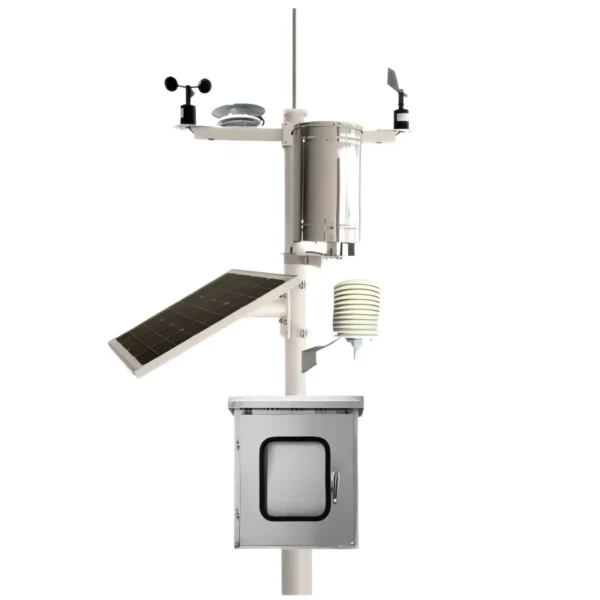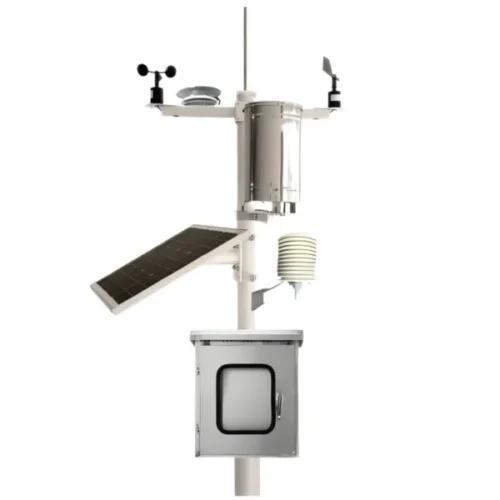
# Automatic Weather Station: A Comprehensive Overview
Automatic Weather Stations (AWS) have revolutionized the way we collect and analyze meteorological data. These advanced systems are designed to operate autonomously, providing real-time weather information without the need for constant human intervention. In this article, we will delve into the key components, functionalities, and applications of AWS, highlighting their significance in modern weather monitoring.
## What is an Automatic Weather Station?
An Automatic Weather Station is a sophisticated system that measures various atmospheric parameters such as temperature, humidity, wind speed, wind direction, rainfall, and barometric pressure. These stations are equipped with sensors that collect data at regular intervals, which is then transmitted to a central database for analysis and dissemination.
### Key Components of an AWS
The primary components of an Automatic Weather Station include:
– Sensors: These are the core elements that measure different weather parameters. Common sensors include thermometers, hygrometers, anemometers, rain gauges, and barometers.
– Data Logger: This device records the data collected by the sensors. It stores the information and can transmit it to a remote location.
– Power Supply: AWS systems are typically powered by solar panels, batteries, or a combination of both to ensure continuous operation.
– Communication Module: This component facilitates the transmission of data to a central server or database, often using wireless technologies like GSM, satellite, or radio.
## Functionalities of an Automatic Weather Station
AWS systems are designed to perform a variety of functions that enhance our understanding of weather patterns and climate conditions. Some of the key functionalities include:
– Real-Time Data Collection: AWS continuously monitors and records weather data, providing up-to-date information that is crucial for weather forecasting and climate research.
– Data Transmission: The collected data is transmitted to a central database, where it can be accessed by meteorologists, researchers, and the general public.
– Remote Monitoring: AWS can be monitored and controlled remotely, allowing for adjustments and maintenance without the need for physical presence.
– Alerts and Warnings: Many AWS systems are equipped with alert mechanisms that notify users of extreme weather conditions, such as storms, heavy rainfall, or high winds.
## Applications of Automatic Weather Stations
Automatic Weather Stations have a wide range of applications across various sectors. Some of the most notable uses include:
– Agriculture: Farmers rely on AWS data to make informed decisions about planting, irrigation, and harvesting. Accurate weather information helps optimize crop yields and reduce risks associated with adverse weather conditions.
– Aviation: Airports use AWS to monitor weather conditions that affect flight operations. Real-time data is crucial for ensuring the safety and efficiency of air travel.
– Disaster Management: AWS play a critical role in predicting and managing natural disasters such as hurricanes, floods, and wildfires. Timely and accurate weather data can save lives and minimize damage.
– Environmental Monitoring: Researchers use AWS to study climate change, monitor air quality, and track environmental conditions in remote or inaccessible areas.
## Conclusion
Automatic Weather Stations have become indispensable tools in the field of meteorology and beyond. Their ability to provide accurate, real-time weather data has transformed how we understand and respond to atmospheric conditions. As technology continues to advance, AWS will undoubtedly play an even greater role in shaping our future, from improving agricultural practices to enhancing disaster preparedness. The comprehensive overview provided here underscores the importance of these systems in our daily lives and their potential to drive innovation in weather monitoring and climate research.
Keyword: automatic weather station
